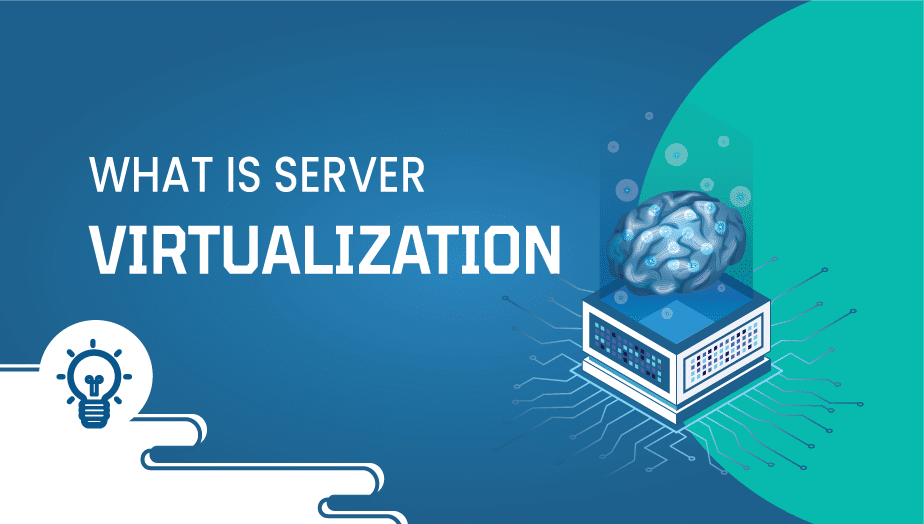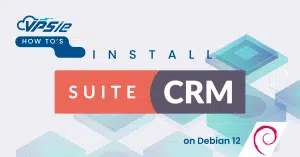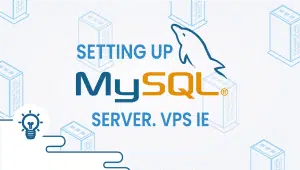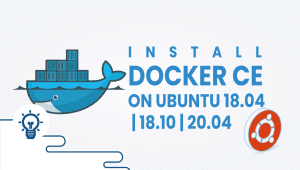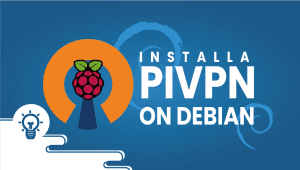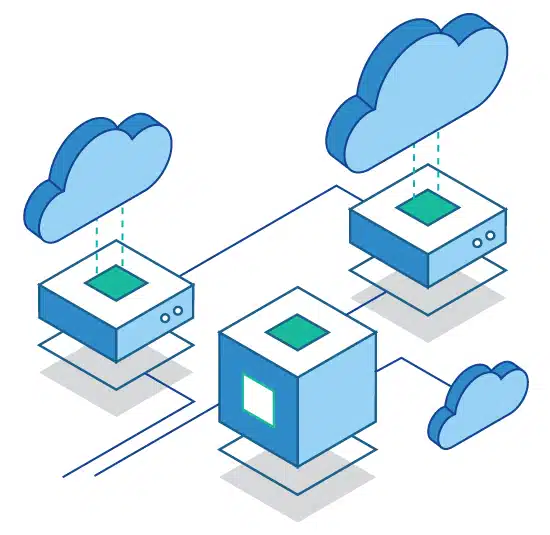What is Server Virtualization?
What is Server Virtualization, and what is Server Virtualized Cloud Hosting?
Before setting up Virtualization (Known as a VPS Node), you would install an operating system on top of the hardware, making it directly linked to the server. This means that each server has to have its separate hardware.
Dedicated servers use around 15% of their resources during average operations. Running your application on bare metal servers can have advantages over Virtualization, depending on your specific needs. In many cases, using a dedicated server is a waste of resources. Software or hardware failures often require hands-on repair on all servers.
Server virtualization was introduced as a solution to some of the abovementioned issues. Virtualization software allows you to “break up” your physical server into multiple virtual ones. When you create virtual servers, you can fully use your physical resources without investing in more hardware and buying lots of dedicated servers, wasting money.
How Does Server Virtualization Work?
To create virtual servers, you first need to set up virtualization software. This essential piece of software is called a hypervizor. Its primary role is to create a virtualization layer that separates CPU / Processors, RAM, and other physical resources from the virtual instances.
Once you install the hypervizor on your host machine, you can use that virtualization software to emulate the physical resources and create a new virtual server.
There are different types of server virtualization. The distinction between them is mainly based on the isolation level they provide, which is also related to how many hardware resources they emulate.
Types of Server Virtualization
There are three (3) approaches to server virtualization based on the isolation they provide:
Full Virtualization or virtual machine model
Paravirtual machine model
Virtualization at the OS level
Types of Hypervisors
Two types of hypervisors are used to create virtual environments:
Type 1 hypervisors (native/bare-metal hypervisors)
Type 2 hypervisors (hosted hypervisors)
Examples of type 2 hypervisors include VMware Workstation, KVM, Oracle VM VirtualBox, Microsoft Virtual PC, Red Hat Enterprise Virtualization, etc.
History of Server Virtualization
While server virtualization has recently exploded in popularity since the global epidemic, Virtualization has developed for over 50 years. During the 1960s, IBM pioneered the first Virtualization of system memory, the precursor to virtual hardware. In the 1970s,
For the first time, IBM virtualized a proprietary operating system called VM/370. This OS-Level Virtualization had little use outside of mainframe computing, but it eventually evolved into a product that became z/VM, the first commercially sold virtual server platform.
Server virtualization dominates the IT industry today, with many companies moving towards fully virtualized cloud-managed IT ecosystems. The popularity of Virtualization increased significantly in the late 1990s with VMware’s release of workstations.
The product enabled the Virtualization of any x86/x64 architecture and brought virtualization mainstream. It was now possible to run Linux, Windows, and MacOS on the same host hardware using control panels such as SolusVM and Virtualizor, both relatively easy to install and set up.
. This ground-breaking technology has shaped IT infrastructure services for the last 20 years.
How does server virtualization work?
All fully virtualized server platforms must have a host or vendor hardware available. This hardware, usually a server, requires virtualization software called a hypervisor.
The hypervisor presents generic virtualized hardware to every operating system that is installed onto the hypervisor.
This generic hardware includes all components required by the operating systems to start, including hard disks, SCSI drivers, network drivers, CPU, and memory allocations.
The virtual machine can only interact with the generic hardware and is independent of any other VM; the hypervisor manages the host resources and allocates them to each VM. The administrator can then set the hypervisor to allocate different resources to each virtual machine depending on its requirements.
Modernization technology can deploy almost any operating system; Linux, Windows, and Aix are widely virtualized. More recently, hardware manufacturers have started offering virtual appliances of their hardware devices.
An excellent example of this is Network Load Balancers, which typically would have been a physical device in a rack, but today, they are often virtualized. Host hardware has become so powerful that offering a virtualized dedicated appliance is more commonplace.
Server virtualization is a method by which software partitions a single physical server into what appear to be multiple virtual machines. To the user, the virtual environment seems like its standalone piece of hardware with set allocated spaces with KVM virtualization. With lesser-used OpenVZ7 Virtualization, you can give more than you have, hence cheap OVZ VPS servers, due to openvz7 technology that shares all resources like shared hosting.
Very desirable for personal use to use OpenVZ7, though KVM VPS hosting would be the go-to secure and higher-end option for production.
This technology is utilized in data centers and IT departments to use server resources better. Specific applications may require isolated environments or a different OS to function. Instead of having multiple servers to manage each function, server virtualization will make it easy to create or deploy separate virtual machines, each capable of running in its unique software environment.
Generally, a physical server only uses 20 percent of its capacity. Hosting several virtual machines on one physical server makes it possible to improve hardware utilization by over 80 percent if configured correctly.
For IT managers and data centers, Virtualization also means reducing hardware costs upfront and TCO long-term. A smaller, more efficient data center means fewer costs in heating and cooling and less equipment to maintain.

With web hosting companies, server virtualization for hosting customers is called virtual private servers (VPS) or virtual dedicated servers (VDS).
As more and more enterprises move to “the cloud,” server virtualization solutions are also commonly referred to as “cloud hosting.” Cloud hosting is an excellent place to host content. Depending on your needs, it comes in many different technologies, forms, colors, and shapes. Hosting clients receive many of the same benefits as data centers and IT departments, so more and more are making that move to the cloud.
Shared hosting is the most common form of web hosting, where several websites are hosted on one physical server. The end-user has little choice over what software is pre-installed and little control over whatever websites are hosted on the server.
At the other end is dedicated hosting, where a client rents one or more servers for exclusive use. It allows the most resources and control for a hosting client but is far more expensive than shared hosting.
A virtual private server can function as an intermediary. It offers the benefits of dedicated hosting without the expense, with some limitations of shared and dedicated hosting.
With a VPS (or a VPSie), the virtual machine appears as a physically separate machine for all intents and purposes. The user can control what OS and software the server runs, regardless of the software environment running on other partitions within the server. Though some essential software runs on the physical server to maintain cells, firewalls, and additional security, the end-user is unaware of anything outside the virtual machine they are interacting with.
Though the virtual server shares physical space with other virtual machines, server virtualization is safer than shared hosting because it functions as a physically separate computer. With shared hosting, there’s the chance that your performance will be adversely affected by other websites on the shared server or that other users could gain access to your data through security breaches.
VPS is a more expensive hosting option than shared hosting, but it’s often a fraction of dedicated hosting costs. It allows for the customization of owning or renting a server without the cost of maintenance or ownership.
VPS may be a good option for websites of businesses with small to medium levels of traffic. While shared hosting may be cheaper, companies need greater control over some applications. However, for websites with a lot of traffic, going with a dedicated server may be the only option for meeting a website or application’s computing power and bandwidth needs.
Hardware manufacturers and server virtualization
Software manufacturers do not just use server Virtualization. IBM manufactures most of its server hardware and plays a significant role in server virtualization. The IBM platforms System P, I, and System Z use a para-virtual hypervisor.
All the guest virtual machines know each other and their resource requirements via the host. The host hardware resources are sliced and allocated to the Virtual Machine (or Logical Partition). IBM Z/VM founded this para-virtualized technique, and nearly all IBM mainframe solutions use this Virtualization method.
For Example, IBM System P uses a pooled virtualized hardware layer managed by an HMC to distribute resources to logical partitions. Each partition is aware of the other partitions’ requirements, and resources are shared to ensure each server has at least the minimum hardware that has been defined.
Benefits of server virtualization
Arguably the key benefits of Virtualization to an organization are its flexibility and cost savings potential. Server Virtualization is much more efficient on host hardware than on individual physical servers. As a result, companies need to procure significantly less hardware for new infrastructure, and older, less economical hardware can be migrated to new efficient hardware.
This benefits the environment, as data centers require less power and cooling. The hardware consolidation also reduces the data center footprint, reducing the costs associated with managed service providers.
Functionality is also a key benefit of Virtualization. Essential functions such as the ability to roll back changes made to systems using a snapshot eliminated the previous requirement to rebuild a server from scratch. Other key server management features, such as vMotion, Cloning, Fault tolerance, DRS, and High Availability, changed how server administrators could increase infrastructure uptime and offer better service level agreements to customers.
New virtual machines can be deployed near-instantly using templates. More recently, building an entirely new virtual infrastructure from scripts has become possible, improving server provisioning drastically. Tools like Terraform can be used to create the infrastructure. Other configuration toolsets, such as Ansible, can configure the newly deployed infrastructure precisely and uniformly to your requirements.
Disaster recovery (DR) has significantly benefitted from server virtualization as well. You no longer need to restore from tape to reprovisioned hardware; the entire virtual infrastructure can be replicated between sites. The DR process can be automated using tools such as VMware Site Recovery Manager. Products such as CloudEndure can replicate servers direct to the cloud and copy the entire infrastructure in a staging area, which can be activated when a DR scenario is invoked.
Virtual Private Servers have long been recognized as a way for businesses to reduce IT costs and increase operational efficiency. By isolating applications and programs within one virtual server set aside solely for you, VPS provides high privacy, security, and control levels.
But while VPS delivers cost savings on hardware and offers the flexibility to run multiple operating systems or sets of programs on individual servers simultaneously, it doesn’t scale well.
In contrast, consuming cloud computing is like buying a much larger ecosystem that allows for scaling up and out. A cloud environment allows you to add more resources to your server, such as RAM, processors, or even cloned copies of your private cloud server to back up your data.
VPS and cloud computing are not mutually exclusive options. You can host your VPS in a virtualized environment. This allows you to convert one physical server into multiple virtual machines, each acting like a unique physical device for running IT resources and web applications flexibly, instantly scalable, and cost-efficiently.
Server virtualization is the process of creating virtual instances of a physical server using virtualization software. Each virtual instance, or virtual machine (VM), can run its own operating system and applications as if it were a separate physical server.
Server virtualization provides several benefits, including:
- Reduced hardware costs: Instead of buying multiple physical servers, you can run multiple virtual machines on a single physical server, reducing hardware costs.
- Improved server utilization: Virtualization allows you to fully utilize the resources of a physical server, which can result in better server performance and cost savings.
- Easy management: Virtualization makes it easy to manage and deploy virtual machines, reducing administrative time and effort.
- Increased flexibility: With virtualization, you can quickly create, move, or delete virtual machines as needed, providing greater flexibility and agility.
There are three main types of server virtualization:
- Full virtualization: In full virtualization, the virtual machines are isolated from the physical server hardware and can run different operating systems and applications.
- Para-virtualization: In para-virtualization, the virtual machines share the physical server’s resources and run a modified version of the operating system that allows for better performance.
- Container-based virtualization: Container-based virtualization, also known as operating system-level virtualization, allows multiple containers to share the same operating system kernel, resulting in efficient resource usage and fast performance.
Some popular virtualization software includes VMware vSphere, Microsoft Hyper-V, Oracle VM VirtualBox, and KVM.
The system requirements for server virtualization depend on the virtualization software you choose and the number of virtual machines you plan to run. Typically, you will need a powerful server with ample RAM, storage, and processing power to support multiple virtual machines.

